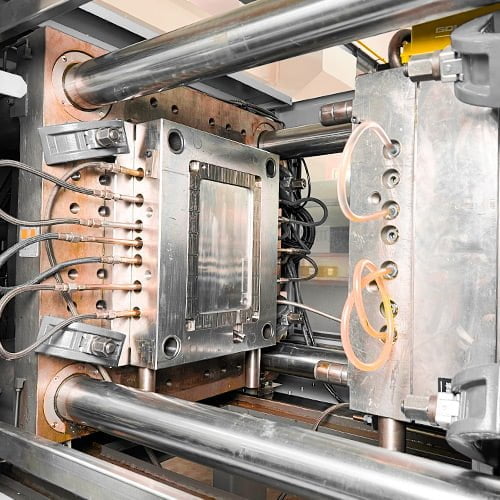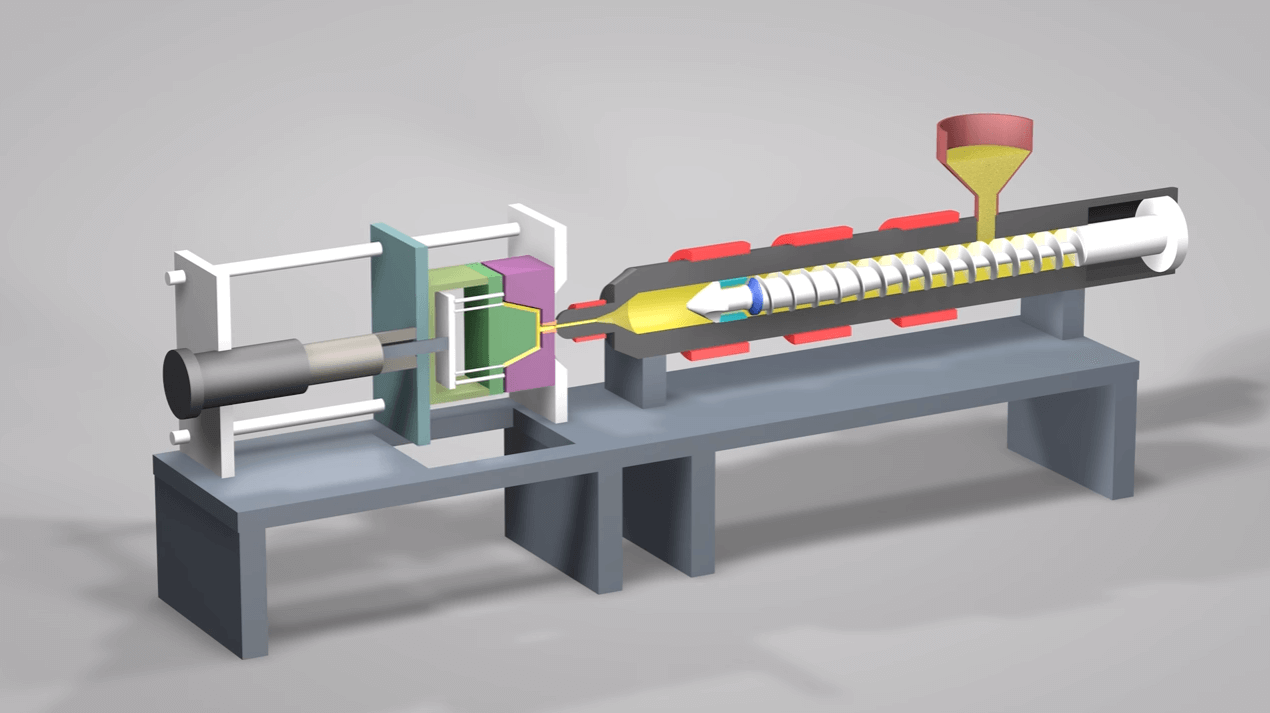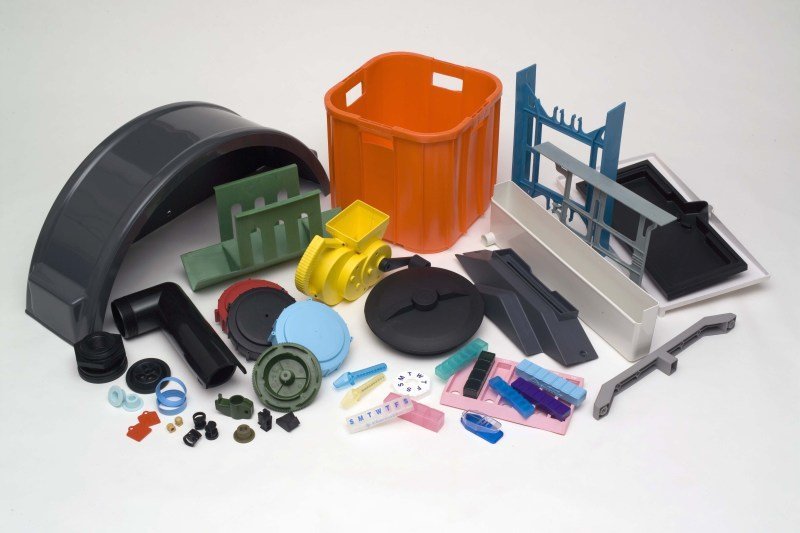Recognizing the Basics of Plastic Shot Molding Procedures
Plastic injection molding serves as a cornerstone of contemporary manufacturing, offering a systematic strategy to producing intricate elements with precision. Exploring these necessary components might expose just how even small changes can lead to substantial improvements in manufacturing results, elevating concerns regarding the capacity for innovation in this well established procedure.
What Is Plastic Injection Molding?
Plastic injection molding is a commonly used production procedure that transforms thermosetting and thermoplastic products right into precise and intricate forms. This method is favored for its ability to produce high quantities of identical components with exceptional precision, making it a crucial technique in numerous industries, consisting of automotive, consumer items, and medical gadgets.
The procedure involves thawing the picked plastic material and injecting it right into a mold and mildew under high pressure. The mold and mildew, designed to the specs of the wanted part, allows the molten plastic to form as it cools down and strengthens. When the product has actually set, the mold and mildew is opened, and the ended up component is expelled.
Plastic injection molding supplies numerous advantages, consisting of decreased waste, uniformity in manufacturing, and the ability to integrate intricate designs that may be challenging with other making techniques. Furthermore, it sustains a broad variety of products, each supplying distinct homes that can be tailored for specific applications. As industries remain to introduce, plastic injection molding stays at the leading edge, allowing the advancement of advanced products that satisfy developing customer needs.
The Injection Molding Process
The shot molding process is an advanced method that includes a number of vital stages to create top notch plastic parts. Initially, plastic pellets are fed right into a warmed barrel where they are merged a thick liquid. This molten plastic is then injected under high stress right into a precision-engineered mold and mildew, which forms the material into the wanted type.
When the mold is filled, the plastic is allowed to cool and solidify, taking the shape of the mold and mildew cavity. Air conditioning time is critical, as it influences the cycle time and the last homes of the shaped part. After sufficient cooling, the mold and mildew opens up, and the completed element is ejected making use of ejector pins.

Materials Utilized in Shot Molding
Numerous products can be made use of in the shot molding process, each offering distinct residential properties that accommodate particular applications. The most typically utilized materials include thermoplastics, thermosetting plastics, and elastomers.

Thermosetting plastics, like epoxy and phenolic materials, go through a chemical modification throughout the curing process, causing a rigid, inflexible framework. These products are optimal for applications requiring high warm resistance and architectural honesty, often made use of in automobile parts and electric insulators.
Elastomers, consisting of silicone and rubber-based products, provide versatility and strength. Their distinct homes make them suitable for applications that demand flexibility, such as seals and gaskets.
In addition, specialty materials like bio-based plastics and compounds are acquiring grip for their ecological benefits and enhanced performance features, widening the scope of injection molding applications in various markets. Understanding the residential properties of these materials is essential for selecting the suitable type for specific tasks.
Advantages of Shot Molding
Shot molding stands apart as a very effective production procedure that offers countless advantages for producing complicated parts with accuracy. Among the most considerable benefits is the capacity to produce intricate styles that would certainly be impossible or challenging to attain with other methods (Plastic Injection Molding). The process permits tight resistances and detailed attributes, making certain top quality elements
Furthermore, injection molding is known for its fast manufacturing abilities, making it an excellent option for high-volume manufacturing. As soon as the mold and mildew is produced, components can be produced swiftly, decreasing lead times and raising overall efficiency. This effectiveness not just decreases production expenses yet also supplies a competitive edge out there.
The versatility of products made use of in shot molding further boosts its appeal. A vast array of thermoplastics and thermosetting polymers can be used, enabling makers to choose products that finest satisfy their certain demands, including warmth, toughness, and flexibility resistance.
In addition, the process lessens waste, as excess product can commonly be recycled and reused. This sustainability aspect adds to a decreased ecological impact, making shot molding a liable manufacturing selection. In general, the benefits of shot molding make it a preferred approach for lots of industries.
Factors Influencing Item Top Quality
While countless factors can affect item high quality in shot molding, recognizing these components is crucial for attaining ideal results. Secret elements include material selection, processing parameters, and mold style.
Material selection plays a vital function, as various polymers show unique residential properties that impact flowability, strength, and thermal security. Inadequate product choice can result in issues such as bending or incomplete dental filling.
Handling parameters, consisting of pressure, cycle, and temperature time, need to be diligently controlled. Variants in these settings can result in disparities partially measurements and surface area finish. For example, exceedingly heats may create deterioration of the polymer, while inadequate stress can lead to short shots.
Mold and mildew style is equally vital, as it figures out the flow of the molten plastic and the cooling procedure. Improperly developed mold and mildews may cause irregular air conditioning rates, causing dimensional mistakes and recurring tensions.

Verdict
To conclude, plastic shot molding works as a crucial manufacturing process that enables the efficient production of high-quality components. Proficiency of the shot molding procedure, including the understanding of materials and the influence of various factors on item top quality, is crucial for attaining ideal results. The advantages of this method, such as cost-effectiveness and layout adaptability, additional highlight its significance throughout numerous markets, solidifying its standing as a favored option for high-volume production.
Plastic injection molding serves as a foundation of modern manufacturing, giving a methodical approach to generating intricate components with accuracy.Plastic injection molding offers numerous advantages, consisting of minimized waste, consistency in manufacturing, and the ability to incorporate complex designs that might be visit this web-site challenging with various other producing approaches (Plastic Injection Molding). As markets continue to innovate, plastic shot molding stays at the center, allowing the growth of sophisticated visit their website products that fulfill developing customer demands
The shot molding process is an advanced technique that includes a number of key phases to produce top notch plastic components.In final thought, plastic injection molding serves as an essential manufacturing procedure that enables the effective manufacturing of top quality elements.